The following interview was conducted as part of “Building Practice,” a professional elective course at Syracuse University School of Architecture taught by Molly Hunker and Kyle Miller, and now an AN interview series. On October 31, 2019, Maria Daniela Andino Donoso and Demitri Gadzios, students at Syracuse University, interviewed Jia Yi Gu and Maxi Spina, principals of Los Angeles-based architecture office, Spinagu.
The following interview was edited by Kyle Miller and AN for clarity.
Maria Daniela Andino Donoso and Demitri Gadzios: Thank you for taking time to speak with us today. We’ll start with some general questions about your collaboration before asking about Piaggio House, the project that we’ve been studying. So, the first question deals with your collaboration. Prior to the establishment of your practice in 2016, what were your individual goals and what led to your collaboration?
Jia Yi Gu: At the time, I was trying to figure out how to be involved in architecture across multiple modes of production. I had a desire to practice in the conventional sense and, at the same time, contribute to architectural culture more broadly, through scholarship and curatorial practice.
Maxi Spina: Prior to Jia and I deciding to practice together, I was running my own architecture office and teaching. Across practice and teaching, I was engaged in advanced digital design, the organization and representation of complex form, and the production of meaning beyond the discipline of architecture. Some of these interests came from previous experience working for Neil Denari in Los Angeles and studying with Jesse Reiser at Princeton University. Some of the initial ambitions and interests that surrounded the formation of my own practice were extensions of what I encountered and participated in during these two experiences. In 2015, Jia and I began having discussions about practicing together and what would constitute the basis of our collaborative practice. We were both, and still are, very interested in working on the medium of exhibition and revisiting modes of display for architecture. Jia’s background working on exhibitions provided a foundation for our first collaborative endeavors.
How do your distinct backgrounds and interests inform your collaboration, and how do practicing, teaching, and conducting research either converge or remain independent?
Jia: I like to think of practicing, teaching, and research not as separate activities, but as different modes of production that engage with similar sets of issues in architecture in distinct ways. So, some activities, like teaching, are more about introducing important ideas and issues to students in order for them to have foundational knowledge about architecture and understand that architecture itself is a form of knowledge production. Other activities, like curating, are about bringing architecture and public audiences closer together. Both are opportunities to re-frame what we think we know in architecture.
Maxi: Exactly, and every endeavor has a different set of conceptual and logistical requirements. Our different backgrounds allow us to divide and share responsibilities in each of the unique contexts in which we seek to make contributions—be it in practice, research, or curation.
Can you be more specific about how your academic research and teaching inform the way you practice?
Jia: On my end, there is a broader interest in labor and in what architects “do.” This is related to the status of architectural education today, where there are quite a few discrepancies between what students do in an educational environment and what is being asked of them in professional and non-professional practice. My research into these issues informs the way that we, as a practice, understand the conditions and agency of architecture today, but also, for example, the conditions of financing that allow architecture to be produced. We’re trying to be reflective and proactive in the way we engage realities of professional practice, and we’re also trying to develop a new value set for teaching. I want students to understand their place in architecture both in terms of the content they produce, but also the container or conditions that allow for such production—and often can foreclose on other models of practice. What we do as educators does not always directly overlap with what we do as practitioners, but both are based on a series of questions about the status of architecture today and the crisis of education and practice.
Maxi: The content of the classes we teach and the work we do in our office are separate. We don’t believe in the apprenticeship model that asks students to replicate our techniques and adopt our aesthetic sensibilities. We prefer to teach in way that opens up questions about design, representation and, more specifically, the status of software with regards to representation. We prefer to give students agency in developing a trajectory for their projects that is more personal, but still within the scope of the broader topic that we introduce. We also do not want to pretend that practice and teaching are entirely separate. They intersect from time to time, but are unique in ways that allow for continuous exchange and evolution.
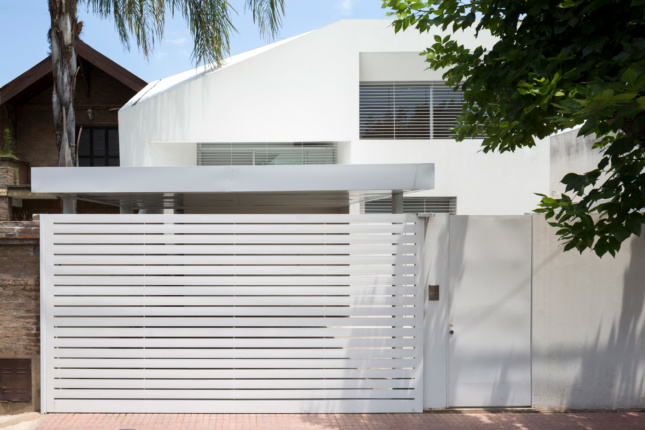
Jia, can you expand on what you just said about architecture’s relation to finance? In your practice, how do you engage traditional models of producing architecture? Do you pursue alternatives?
Jia: It’s a serious limitation for our field to think that what we do as architects is merely provide a service. Unfortunately, most architecture offices subscribe to this service model without giving it much thought. There’s a long history about why the profession is operating this way, and its relation to capitalism. Today, I feel anxiety about hyper financialization. Let me elaborate on this for a moment… 95 percent of housing in the United States is financed and constructed by developers. So, unless architects are seriously wanting to rethink the financial system by which architecture comes into being, we are basically going to lose out to high-return developers who have very different, often problematic values. Our response to this dissatisfaction—and it’s a response shared by many of our peers—is to teach as a way to sustain ourselves and enable a form of practice that can operate slightly outside of the service model. I believe architects don’t think enough about generating new, more equitable economic models for practice.
There are entire sectors of the economy, like the nonprofit world for example, that have access to funding that are also values-based. So, there are other ways to practice… other economic models for practice… these other ways of practicing are things we are more aggressively pursuing right now. We are interested in how architects can become developers, not as profit-driven entities, but in order to design a better system for the financing of buildings.
Regarding some of your collaborative efforts, your installations investigate issues of perception through the manipulation of profiles. Where does this interest come from and how has it evolved from project to project?
Maxi: The work on profiles was developed in installations and conceptual projects completed across a two-year period. It started when we were invited to participate in an exhibition at Jai & Jai Gallery in Los Angeles in 2015 that asked architects to produce objects inspired by chess pieces. This opened up an avenue of investigation for us that engaged ideas of perception and posture of an architectural object. And profile as a topic in architectural form is very different from the topics of surface and volume, which I had been working on previously. So, working on profiles enabled us to expand our engagement with form beyond more familiar topics of engagement.
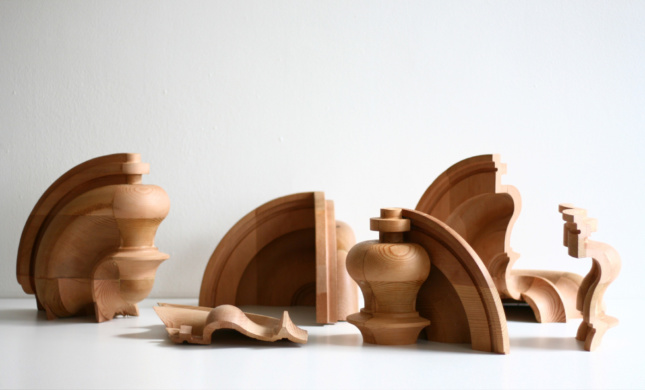
Jia: The invitation to produce artifacts for the chess exhibition also provided an opportunity to study physical production of chess pieces. And it turns out, chess pieces have strong profiles because a profile is the result of rotating the wood around the lathe which allows for carving of the piece—a figural condition that is distinct from a machine’s toolpath, let’s say. So, from the start, there was an interest in the relationship between profile manipulation in the digital, immaterial environment compared to profile creation in a physical, material environment. This relationship, along with issues of corners, offsets, and thickness, was explored in a variety of ways across two additional projects.
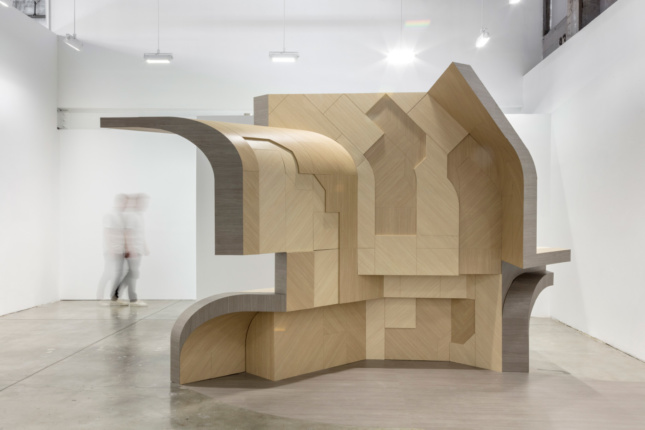
We have a question about Piaggio House. How were issues of constructability and materiality folded into the design process on the front end?
Maxi: One of the issues that played a critical role in the development of the design was security, and layers of defense. I’ll come back to this, but I mention it first because it inspired a conceptual investigation into registering thickness through movement. Because of issues of security and the need to incorporate certain features native to the typology of single-family homes in the neighborhood, things like thresholds between significant spaces became important as a series of checkpoints or layers in relation to physical access.
So, the house has an incredible range of spaces from fully enclosed and private to open and very visually accessible. The urban condition of that particular neighborhood in Rosario also dictated certain qualities. For example, and again tied to security concerns, the house could not be freestanding, as a way to limit accessible perimeter. What could potentially have been a rather banal aspect—the threshold between interior and exterior—became the most interesting aspect of the design. Every house in Rosario has about five layers of security. It’s not just a gate and a front door that separates public from private. Multiple layers need to be incorporated to properly address this issue. In this way, the practical and pragmatic aspects of this security issue became important to us in the overall conceptualization of the house, it’s form, interior organization, and even materiality.
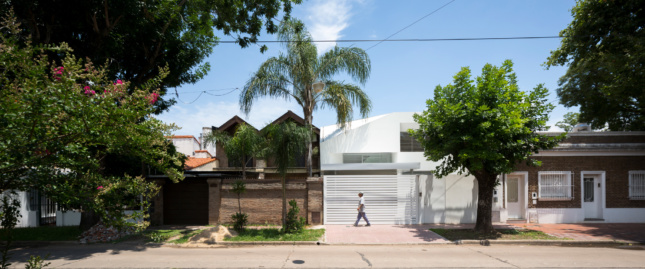
Last question… what are some of the most rewarding aspect of being architects and educators?
Jia: For me, it’s teaching. Teaching is incredibly rewarding! I learn so much from students and I’m inspired by the ways in which they prepare for practice. By the time someone has entered the profession they are formed subjects, and it’s in working with students where I see formation in real time, and where change can occur as one prepares to practice and engage the world more critically.
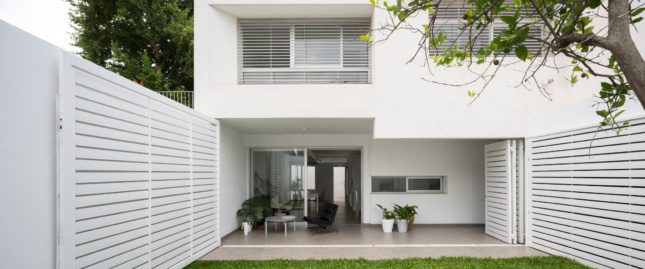
Maxi: I can point to two things. The first is that we’ve been given and have earned opportunities to create projects that make genuine contributions to contemporary discourse. We’re thankful to have peers with similar ambitions that we can talk to, exchange ideas with, be inspired by, and hopefully inspire. The second thing is very simple… it’s just an afternoon in the office, working on projects. That’s probably the most rewarding time for me. We’re so busy, so I really try to appreciate the time I have in the office to work and be productive.











